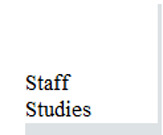
Staff Studies
 |
170 The Cost of Implementing Consumer Financial Regulations: An Analysis of Experience with the Truth in Savings Act Gregory Elliehausen and Barbara R. Lowrey December 1997 |
Summary: The Truth in Savings Act mandates that financial institutions disclose certain information about the terms of consumer deposit accounts in specific forms and at specific times. Although many depository institutions provided disclosures of account terms before the act was passed in 1991, most did not satisfy completely all the requirements of the regulation (Regulation DD) adopted by the Federal Reserve Board to implement the law. Thus, the Truth in Savings law likely caused every depository institution to change its practices for consumer deposit accounts, and thereby to incur costs.
To improve understanding of the process and costs of implementing regulatory changes, the Federal Reserve Board conducted the Survey of Compliance Costs for Truth in Savings in 1992-93, during the implementation period for the regulation. Presented in this study are survey findings on the changes in consumer deposit account practices and the costs of compliance at U.S. commercial banks. One of the key questions addressed in the study is how sensitive start-up costs for a regulation are to the extent of required changes in banks' policies and practices: Do banks that must make extensive changes incur greater costs in proportion to the amount of change? Evidence on this question, which was not previously available, has implications for regulatory agency policies on the frequency and magnitude of changes in regulations.
Responses to the survey indicate that most banks provided extensive written disclosures to consumers before Truth in Savings but that most banks, if not all, had to change some policies and practices for consumer deposit accounts to comply with the law. The cost to banks of implementing the changes was $337 million in total, or $29,390 per bank. Statistical analysis using a cost function reveals that there were economies of scale in complying with Truth in Savings, a result that gives further credence to the findings of earlier studies involving other regulations. The implication of the finding is that small firms have a cost disadvantage in complying with new regulations.
This study breaks new ground in examining the relationship
between amount of change and compliance costs. Statistical analysis
indicates that start-up costs for complying with Truth in Savings were
Full paper (74 KB PDF)
Home | Research and data | Staff Studies
To comment on this site, please fill out our feedback form.
Last update: August 17, 2000